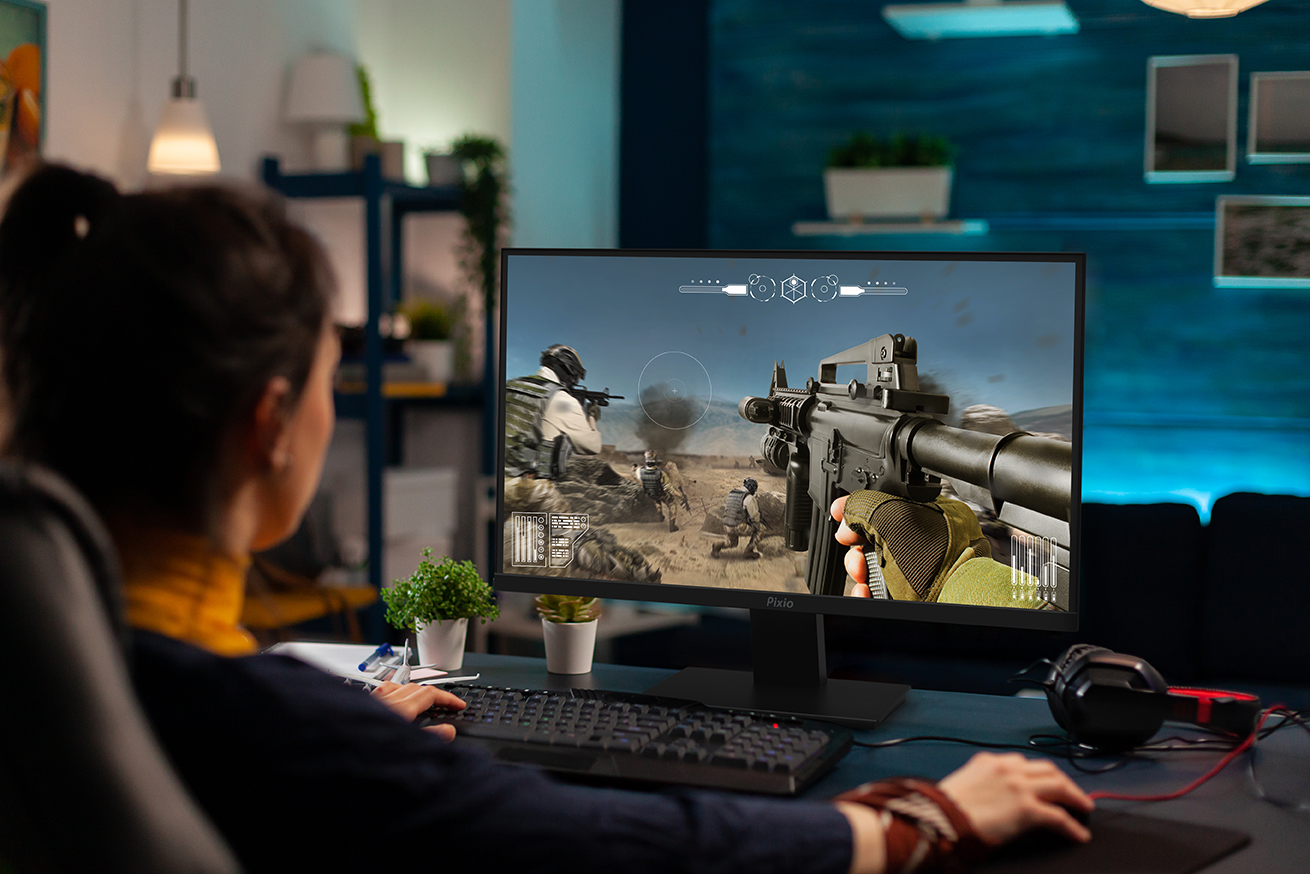High refresh rate monitors are dominating the gaming world, but with options like 144hz and 165hz, choosing the right one can be tricky. This guide explores refresh rates and helps you decide between 144hz vs 165hz monitors.
What is Refresh Rate?
Imagine your monitor like a flipbook – the faster the pages flip, the smoother the picture. Refresh rate is how often the monitor refreshes the image, measured in Hertz (Hz). A 144hz monitor refreshes the image 144 times per second, creating a smoother experience compared to a standard 60hz monitor.

Why Does Refresh Rate Matter in Gaming?
High refresh rates benefit gamers in several ways:
Smoother Gameplay: Especially in fast-paced games, a higher refresh rate allows for displaying more frames per second. This translates to smoother character movement, object transitions, and overall gameplay.
Reduced Motion Blur: High refresh rates minimize motion blur, the smearing effect seen in fast-moving objects. This lets you spot enemies or react to in-game events quicker, giving you a competitive edge.
Lower Input Lag: Refresh rate also impacts input lag – the time between your action (like moving the mouse) and the response on screen. A high refresh rate reduces input lag, making games feel more responsive to your controls.

144hz vs 165hz: What's the Difference?
The difference between 144hz and 165hz is small. A 144hz monitor refreshes 144 times per second, while a 165hz refreshes 165 times. This translates to a 14.5% difference.
For most gamers, the jump from 60hz to either 144hz or 165hz is a significant upgrade. However, the difference between 144hz and 165hz might be negligible.
Can My PC Handle a 144hz or 165hz Monitor?
To take advantage of a high refresh rate monitor, your graphics card (GPU) needs to deliver at least that many frames per second in the games you play. Check online benchmarks to see how well your graphics card performs in your favorite games.
If your graphics card can't generate frames fast enough, even a high refresh rate monitor won't be able to display them. This creates a bottleneck, where the monitor's refresh rate outpaces the GPU's ability to output frames. In this case, you'll experience stuttering or choppy gameplay despite the high refresh rate.
The type of game you play also impacts the GPU's workload. Fast-paced games like first-person shooters (FPS) or real-time strategy (RTS) games typically benefit more from high refresh rates. These games require quick reflexes and split-second decisions, where smoother visuals provided by a high refresh rate and powerful GPU can give you a competitive edge.
Do I Need 165hz for Gaming?
While some professional gamers might prefer a 165hz monitor, especially in fast-paced esports settings, a high refresh rate monitor in general (144hz or 165hz) is more important than the specific difference between 144hz and 165hz. Once you hit refresh rates above 120hz, the benefits become less noticeable for most people.

Should I Get a 144hz or 165hz Monitor?
Here's what to consider:
Price: If price is a major concern, a 144hz monitor might be the more budget-friendly option. The price difference between 144hz and 165hz monitors can vary, but for a similar quality panel, the 144hz might be cheaper.
Other Monitor Specs: Refresh rate is a crucial factor for smooth gameplay, but it's not the only consideration when choosing a gaming monitor. Here's a breakdown of other important specs to consider:
Panel Type
The panel type determines the overall image quality, viewing angles, and response time of your monitor. Here are the three main panel types for gaming monitors:
-
In-Plane Switching (IPS): Offers excellent viewing angles, good color accuracy, and decent response times. Ideal for gamers who value overall image quality and wide viewing angles.
-
Vertical Alignment (VA): Offers a good balance between response time, viewing angles, and contrast ratio. VA panels often have deeper blacks and higher contrast than IPS panels, but response times might be slightly slower.
-
Twisted Nematic (TN): Known for fast response times, making it ideal for fast-paced games. However, TN panels typically have poorer viewing angles and color accuracy compared to IPS and VA.
Size and Resolution (PPI)
The size and resolution of your monitor determine how much screen real estate you have and the overall sharpness of the image. Here's what to consider:
- Monitor Size: Choose a size that complements your viewing distance and desk setup. Common gaming monitor sizes range from 24 inches to 34 inches.
- Resolution: Resolution refers to the number of pixels displayed horizontally and vertically on the screen. Higher resolutions like 1440p or 4K offer sharper images but demand more processing power from your graphics card. Pixel per Inch (PPI) refers to how many pixels are packed into a single inch of screen space. A higher PPI generally results in a sharper image, but the ideal PPI depends on viewing distance and personal preference.
The Verdict: 144hz vs 165hz
Ultimately, the best choice depends on your needs and budget. If you're on a tight budget or prioritize other monitor features, a 144hz monitor is a fantastic option. But if you have a powerful graphics card, and don't mind spending a bit more, a 165hz monitor might be the way to go.
No matter which you choose, both 144hz and 165hz monitors offer a significant upgrade over traditional 60hz displays, making your gaming experience smoother, more responsive, and overall more enjoyable.

0 comments